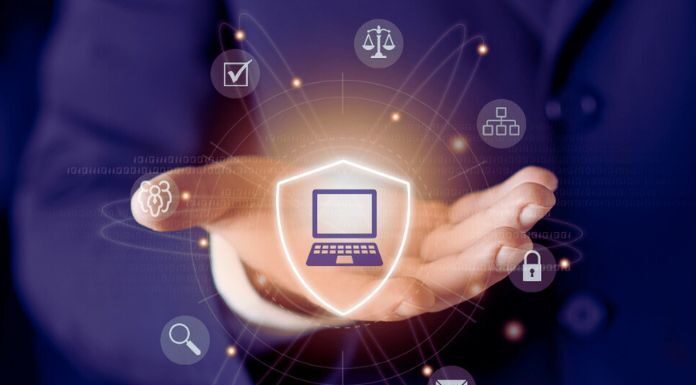Challenges of Information Security: We live in a digital age where technologies create countless opportunities and challenges for security.
Due to the proliferation and increasing complexity of digital threats, it is crucial to stay current on the key daily risks.
This article discusses seven top security challenges we face in the digital age, including remote intrusions, computer viruses, data theft, and more. In addition, we will also discuss some measures that can be taken to reduce these risks.
Challenge 1: Maintain Data Protection
Information security is essential to keep any modern company’s operations safe and secure from internal and external cyber threats. The advent of digital technology and increased connectivity further complicates the challenge of protecting today’s business data and information.
Large volumes of data are transferred between various systems, and with that, information security gains even more important in maintaining the integrity of data and information. There are several challenges that companies need to face to ensure information security. The first one is to maintain data protection.
Once user data and information is publicly available, companies must robustly protect them to avoid risk. A sound approach to information security starts with appropriate information security policies for access and restriction levels and defined and trusted access control practices.
Challenge 2: Preventing Cyber Threats
The second information security challenge in the digital age is preventing cyber threats and keeping sensitive data and information safe. With many devices connected and sensitive information stored in the cloud, cyberattacks can devastate businesses and their customers.
Both organizations and end users are dealing with increasingly sophisticated cyberattacks. To help companies avoid cyber threats, information security must be strengthened through adequate protection, with information security programs, employee training, and robust security solutions to protect your data.
Therefore, it is very important for companies to invest in information security to ensure that their sensitive data and information are safe.
Challenge 3: Manage Digital Risks
Tackling information security challenges requires a holistic approach, and digital risk management is necessary to ensure continuous protection and effective functioning of different systems.
Several factors can contribute to increased risks as new services and technologies become available. Digital risk management allows you to assess risks and take action to help mitigate and even combat their consequences for your business.
Risk management aims to identify, monitor and assess the information security threats faced by the company. This requires regular assessment to ensure the organization is kept from new risks.
Risk management also requires each team member to understand the vulnerabilities and the importance of following information security best practices.
Challenge 4: Improve IT Resiliency
Today, organizations face new information security challenges due to the digitization of processes, new ways of working, and ultra-connected services. Challenge number 4 is increasing IT resiliency, which means strengthening information security so that systems can recover quickly from security incidents, reducing downtime.
A good IT resiliency strategy involves the following:
- Identifying threats and vulnerabilities.
- Developing processes to minimize exposure.
- Taking steps to mitigate risks related to information security.
This may involve investing in advanced security solutions that provide continuous monitoring and risk information and adequate training for those responsible for information security.
By improving IT resiliency, organizations can reduce exposure to information security risk and increase systems reliability.
Challenge 5: Develop Effective Security Policies
In the digital age, organizations need effective security policies to protect sensitive data and infrastructure from cyber threats.
In this sense, developing a security policy with the best security procedures is essential to protect data, infrastructure, and systems from cyber threats. A good security policy should address threat identification, monitoring, and incident response.
In addition, it should also include guidelines for the use of mobile storage devices, cloud services, and other technologies and establish guidelines to be followed to maintain data security and ensure the integrity of IT systems.
Finally, security policies should be regularly updated to protect data and information security infrastructure.
Challenge 6: Increase Security In The Cloud
With digitization increasing every day, organizations must keep their information secure. The sixth information security challenge in the digital age is increasing security in the cloud.
The use of applications and solutions from remote servers has become increasingly significant in the modern economy. As a result, confidential information is exposed to breaches, which makes cloud security increasingly important.
There are several ways to ensure the security of information in the cloud. Implementing security measures such as data encryption, user authentication, access policies, and security controls is necessary. Some additional security measures are digitally signed certificates and keeping virtual machines and cloud services within a secure perimeter.
Secure storage and transfer of data are also important aspects when it comes to cloud security. To that end, it is important to use secure protocols, strong authentication, and protocol encryption to protect data in transit.
Cloud security has been a critical information security challenge in the digital age. Implementing proper security measures such as encryption, authentication, a strong access policy, adequate security controls, and working with trusted cloud service providers are key to ensuring that data stored and transferred in the cloud is protected.
Challenge 7: Implement Multi-Factor Authentication
We live in a digitized world, and the number of threats to information security has also increased. The seventh of the top information security challenges in the digital age is the Implementation of Multi-Factor Authentication (AVF). This authentication technique adds additional layers of security to user accounts and, as a result, significantly increases information security.
AVF uses multiple variations of identity verification, such as security cards, mobile phones, portable tokens, fingerprints, and facial recognition. These secure methods require the user to provide two or more forms of information, prove that their token is unique and non-reproducible, and gain access to sensitive information.
These secure authentication techniques significantly increase information security. Until now, many organizations have not yet adopted multi-factor authentication for reasons of cost and complexity.
Also Read: Cloud Computing And Information Security

